Did you know that a single teaspoon of healthy soil contains more living organisms than there are people on Earth? This remarkable fact underlines the sheer complexity and potency of natural systems—systems that, when understood and respected, can propel our gardens, landscapes, and even our lives to thrive beyond expectation. In a world seeking sustainability and abundance, nature’s own growth techniques remain the ultimate blueprint for vitality. If you’ve ever wondered how wild ecosystems create lush forests or perennial food gardens with minimal outside input, you’re about to uncover the secrets beneath the surface.

What You'll Learn
- The core principles behind nature’s most effective growth techniques
- How healthy soil shapes everything from wild woodlands to backyard gardens
- Ways to apply the wisdom of native plants and perennial foods for resilient abundance
- Expert ideas, actionable checklists, and surprising natural strategies you can use now
- The real science—and ancient wisdom—powering the living world’s successes
The Remarkable Secrets Behind Growth Techniques in Nature
At the heart of every flourishing ecosystem are growth techniques in nature that quietly work wonders. These time-tested processes don’t rely on chemicals or constant human intervention. Instead, they center on fostering conditions where healthy soil , beneficial relationships, and resilient plants form the foundation for vibrant landscapes. Growing with nature means allowing the innate patterns of the living world to work in our favor—resulting in spaces that are truly alive with abundance for people, pollinators, and wildlife.
For example, consider how ancient forests maintain their lushness. Every fallen leaf, rotting branch, and busy earthworm contributes to a cycle that enriches the earth, cultivating abundance for all that calls the forest home. By understanding these secrets—such as fostering good microbial activity, mimicking closed nutrient cycles, and supporting diversity—we revive and heal our living world, even in our own backyards.
How Growth Techniques in Nature Shape the Living World
Growth techniques in nature extend far beyond simple plant growth. They shape the living world by weaving together plants and wildlife into a vast, interconnected network. Each organism plays a role—fungi help roots access nutrients, native plants provide food for pollinators, and beneficial insects keep pests in balance. This deep symbiosis forges resilient, self-sustaining communities that adapt to changing conditions.
By cultivating abundance for people and wildlife alike, these techniques heal the living world while allowing us to enjoy wild beauty and productivity. The cycle is self-repairing: if a gap opens, new growth emerges to fill it, maintaining harmony and supporting the growth of individual species and the ecosystem as a whole.

Harnessing Growth Techniques in Nature: Lessons From the Living World
Learning from the living world means observing, respecting, and emulating nature’s time-tested growth processes. The best-kept secrets of natural abundance—the regenerative power of healthy soil , the resilience of native plants, and the harmony of natural systems—can be harnessed to transform any property home or garden. Growing with nature is less about control and more about partnership, where we help the land heal itself and revitalize the living world.
These lessons are relevant for anyone, whether you want to grow food, restore a wild meadow, or simply enjoy wild beauty in your own space. Start working with your land, embrace local diversity, and see how quickly abundance for people and wildlife can be cultivated by letting nature’s rhythms lead the way.
Native Plants and Their Influence on Growth Techniques in Nature
Native plants are at the core of effective growth techniques in nature. They are naturally adapted to local climate, soil, and wildlife, making them exceptionally low-maintenance while providing crucial habitat for pollinators and other creatures. Including native plants in your landscape reduces the need for water, fertilizers, and pest controls—helping keep pests in balance and ensuring productive, healthy soil.
When you prioritize native species, you encourage a self-sustaining environment that supports all who call your property home. This approach not only helps restore the living world, it also simplifies gardening chores. Native plantings draw in beneficial insects, birds, and bats, all of which play a role in cultivating abundance by pollinating crops, preying on pests, and keeping the ecosystem in equilibrium.
Why Growing With Nature Is the Ultimate Approach
Growing with nature isn’t merely about avoiding chemicals or adopting organic methods—it’s about aligning with the living world’s most successful strategies. Rather than fight against local conditions, we can harness them to produce reliable harvests, vibrant beauty, and true abundance for people and wildlife.
Choosing to grow with nature means working with wind, rain, sunlight, and soil biology. It invites serendipity, encourages resilience, and fosters enjoyment of wild landscapes. In this way, we heal our living world, create safe havens for native species, and experience the satisfaction of environments alive with abundance.
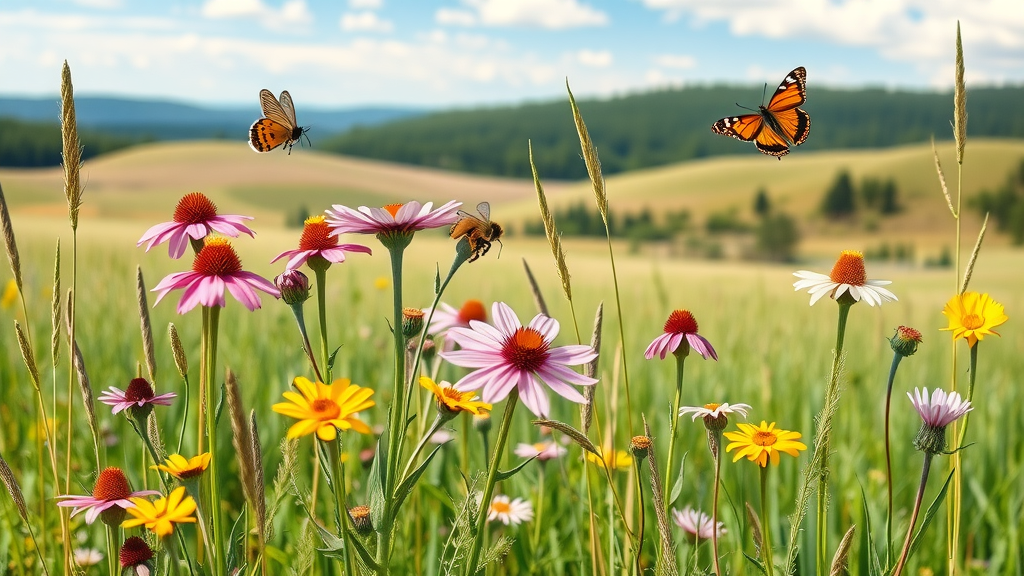
Critical Factors: Soil Health and Working With Your Land
The secret sauce in every lush garden or ecosystem is healthy soil—a dynamic medium churning with life, nurturing growth from the ground up. Without it, the most valiant efforts at growing with nature will founder. Understanding your soil’s composition, biology, and structure allows you to create environments where native plants and perennial foods flourish, ensuring your efforts to cultivate abundance are well-rewarded.
Another aspect is the importance of truly working with your land. Instead of forcing unsuitable crops or landscaping features, adapt growth techniques to your area’s unique slopes, microclimates, and hydrology. Recognizing these nuances is key to unlocking sustainable, wild abundance that endures season after season.
Healthy Soil: The Foundation of Effective Growth Techniques in Nature
Healthy soil is a bustling universe where plants and wildlife team up to heal the living world. Packed with beneficial bacteria, earthworms, and fungi, it recycles nutrients and retains moisture even in dry spells. Building rich soil requires adding organic matter, nurturing soil organisms, and limiting the use of chemicals that can disrupt this delicate, productive balance.
Soil’s magic lies in its structure—an open, spongy matrix that allows roots, water, and air to move freely. This, in turn, allows crops to grow food reliably and makes the living world more resilient against drought, pests, and disease. When you focus on soil health, every other growth technique in nature becomes easier and more effective.
Working With Your Land: Adapting Growth Techniques in Nature to Local Environments
No two properties are alike. That’s why working with your land is essential for lasting success. Observe sun and shade patterns, water flow, and natural windbreaks before you plant a single seed. Adapt by choosing species that suit your microclimate and soil type, and place plantings to maximize sun, shelter, or rain capture as needed.
Consider terracing steep slopes, adding mulch to dry areas, or creating swales to slow and store water. By working with, not against, your local environment, growth techniques in nature will help you cultivate abundance for people, pollinators, and every living thing that calls your property home.
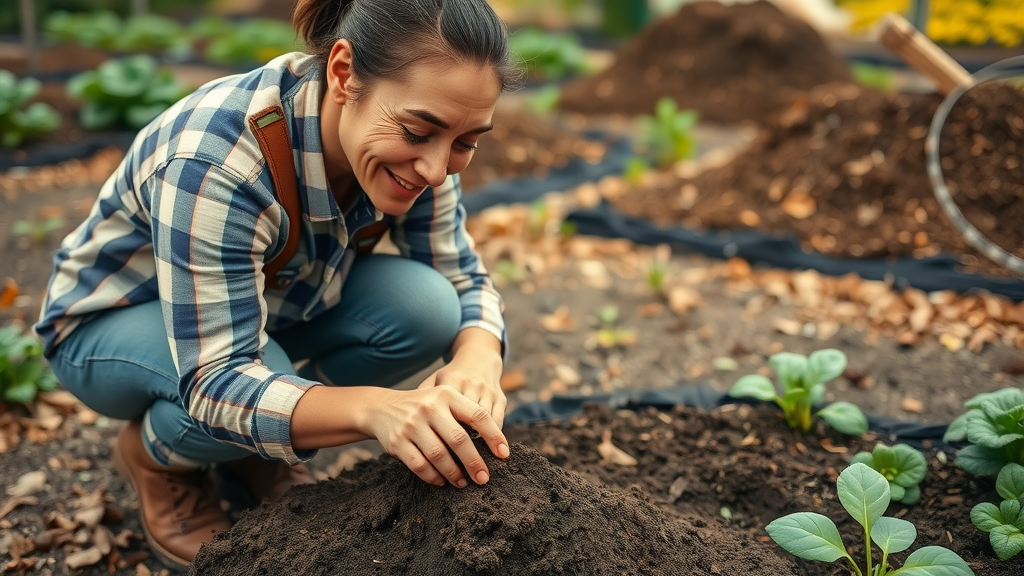
Perennial Foods and Their Impact on Sustainable Growth Techniques in Nature
When we look to nature for enduring abundance, perennial foods emerge as stars. Unlike annual crops that demand yearly replanting, perennials establish strong roots, build soil, and provide food for years with less effort. This is a core principle of nature’s growth techniques—and one increasingly validated by modern sustainability science.
A well-planned garden featuring perennial foods—like berry bushes, nut trees, or perennial vegetables—offers steady harvests while enriching soil health and nurturing wildlife. These long-lived plants are integral to making the living world resilient and abundant, especially in the face of changing climates or resource shortages.
Perennial Foods: Building Resilience Through Growth Techniques in Nature
The brilliance of perennial foods lies in their resilience. Deep-rooted, drought-hardy, and disease-resistant, perennials stabilize soil and sequester carbon, all while providing food for people and habitat for wildlife. In nature, many forests, wetlands, and meadows flourish on the back of perennial species, which steadily build layers of organic matter and biodiversity year after year.
By embedding more perennial foods into your garden or landscape, you cultivate abundance and ensure that each season contributes positively to soil, climate, and the broader ecosystem. Perennials help keep pests in balance, reduce labor, and multiply returns over time—an unbeatable combination for anyone eager to heal our living world.
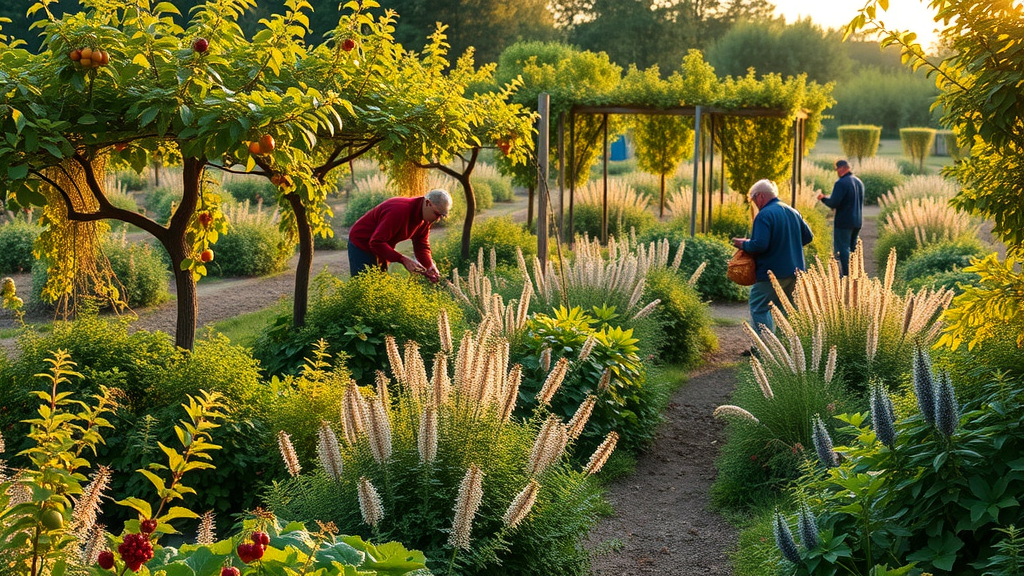
Transforming Spaces: Creating Landscapes Alive With Abundance Using Growth Techniques in Nature
It’s possible for any space—no matter how barren or neglected—to become alive with abundance by applying growth techniques in nature. This transformation begins with thoughtful design, observing site patterns, and aiming for vibrant, resilient diversity reminiscent of the natural world. By integrating layers of trees, shrubs, and herbaceous plants, and harnessing water wisely, you set the stage for long-term vitality and beauty that benefits all who call your property home.
Design principles such as “stacking functions” (making each element serve multiple purposes), “edge effect” (maximizing transition zones for increased productivity), and “diversity first” (blending a variety of species and forms) are borrowed straight from wild ecosystems. In every thriving natural system, these principles create spaces alive with abundance for people, pollinators, and the planet.
Design Principles for Abundant Natural Growth
The most effective landscape designs mimic forests or prairies, layering plant heights and types to provide year-round habitat, food, and soil cover. Begin with tall trees for canopy, add fruiting shrubs for food, lay down groundcovers for weed suppression and pest balance, and intersperse native wildflowers for pollinators. Incorporate ponds or rain gardens to manage water naturally and create oases of biodiversity.
With this multifaceted approach, your property becomes a microcosm of the living world—dynamic, resilient, and ready to heal our living world while rewarding you with beauty and abundance.

Embracing Biodiversity When Applying Growth Techniques in Nature
Biodiversity is the heartbeat of growth techniques in nature . Every plant and animal, from the smallest soil microbe to the grandest oak, contributes to the vitality and abundance of the living world. By maximizing diversity—of plant types, root depths, flowering times, and wildlife—the entire ecosystem becomes more adaptable and resilient against threats like climate extremes and pest outbreaks.
This melding of life forms not only heals the living world, it also creates abundant yields for people and endless beauty to enjoy wild. If you want a resilient garden or landscape, let biodiversity be the guiding principle in your design and management decisions.
Lessons From the Living World: Biodiversity’s Role in Growth
Biodiversity fosters redundancy (multiple species serving similar functions) and synergy (benefits that arise from species working together), which are critical in nature’s growth process . The presence of varied flowers sustains pollinators across seasons, a mix of groundcovers and shrubs keeps pests in balance, and layered habitat structures support wildlife year-round. The result: living spaces that can recover quickly from disturbances and continually regenerate abundance for people and all who make the living world their home.
Protecting and enhancing biodiversity in any landscape, garden, or public green space is the surest way to cultivate abundance while contributing to the health of the wider natural world.

Comparing Growth Techniques in Nature Across Ecosystems
| Ecosystem | Key Growth Techniques | Main Benefits | Unique Challenges |
|---|---|---|---|
| Forests | Multi-layered planting, nutrient cycling, decay of organic matter | Biodiversity, rich soil, carbon sequestration | Susceptible to deforestation, invasive species |
| Grasslands | Deep-rooted perennials, periodic fire, grazing cycles | Soil stabilization, resilience, habitat for pollinators | Prone to overgrazing, soil erosion |
| Wetlands | Water filtration, perennial flooding, aquatic plants | Water purification, flood mitigation, wildlife sanctuary | Vulnerable to pollution, drainage |
| Urban Landscapes | Native plants, rain gardens, green roofs | Stormwater management, temperature moderation, habitat for urban wildlife | Limited space, soil compaction, pollution |
Learning From the Experts: Wisdom on Growth Techniques in Nature
"In every corner of the Earth, where nature is left to weave her magic, we witness a tapestry of renewal and abundance. To learn from her is to receive the ultimate lesson in resilience."
—A modern sustainability thinker
Unorthodox Growth Techniques in Nature: Surprising Natural Strategies
Nature often surprises us with unconventional approaches to abundance—from plants teaming up underground to forests revitalized by fire. By moving beyond traditional ideas and looking to the world’s wilder strategies, we unlock new ways to heal our living world, address challenges, and cultivate abundance for people and wildlife alike.
Symbiotic Relationships: Nature’s Teamwork for Growth
Plant roots and mycorrhizal fungi create a vast trading network underground, exchanging nutrients and water in a mutually beneficial relationship. This symbiosis—a classic growth technique in nature—supercharges nutrient uptake and foster resilient growth. Above ground, pollinators like bees and butterflies form additional partnerships with plants, ensuring fruitful reproduction and food for both parties.
These natural alliances aren’t just curiosities—they are key to thriving systems that enjoy wild abundance, keep pests in balance, and make the living world a place of unending renewal.
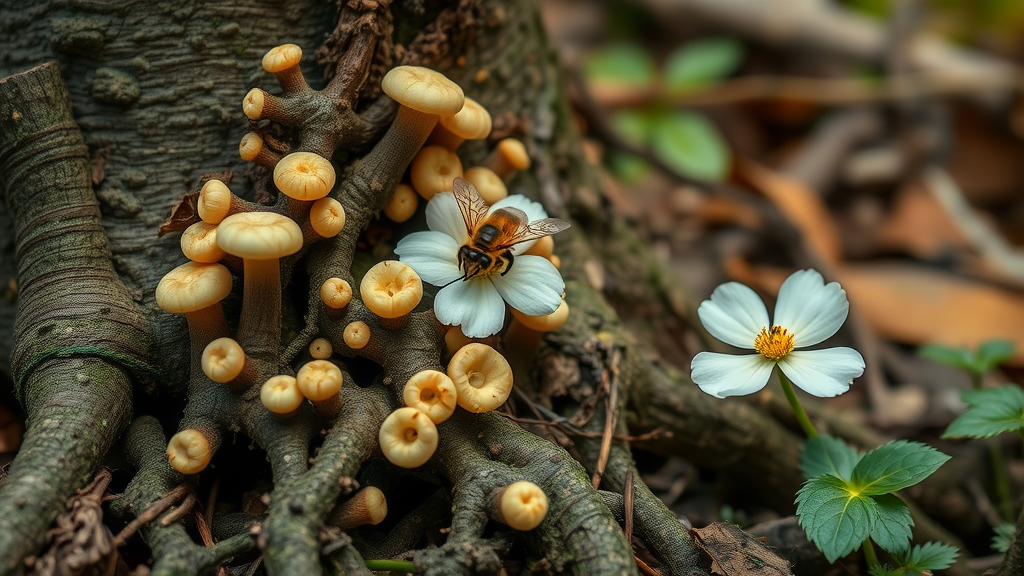
Regeneration and Disturbance Cycles in Growth Techniques in Nature
Contrary to what you might expect, disturbance—like fire, grazing, or flood—can spark regeneration. In many ecosystems, periodic events clear old growth, recycle nutrients, and encourage the establishment of pioneer plants. This cycle underpins much of nature’s growth process , making the living world not only more resilient but also more dynamic and diverse.
When we mimic or respect these cycles—allowing small disturbances, rest periods, or seasonal changes—we harness the same energy that keeps wild systems alive with abundance year after year.
Natural Selection: The Evolution of Growth Strategies
Nature’s most successful growth techniques are the product of countless generations of natural selection. In every ecosystem, plants and animals experiment with new forms, behaviors, and partnerships. The most effective strategies—whether deep roots in grasslands or thick bark in fire-prone forests—persist and spread, helping to heal and revitalize the living world. By learning from these time-proven strategies, we ensure that our own efforts to cultivate abundance for people are future-proof and robust.
Applying Growth Techniques in Nature to Everyday Life
Nature’s wisdom isn’t limited to wild landscapes. These growth techniques have powerful applications in our gardens, communities, and even personal development. By aligning our decisions with the living world, we open new doors for creativity, resilience, and well-being.
Personal Growth Inspired by Nature's Resilience
Just as forests recover from storms and flowers persevere through drought, people too can find in nature an endless wellspring of inspiration. Observing how the living world adapts, regenerates, and flourishes invites us to embrace change, learn from setbacks, and cultivate abundance for ourselves and those around us. The patterns of persistence and renewal in nature translate directly to our own growth journeys—reminding us that resilience often emerges from adaptation and deep-rooted connections.
How to Apply Nature’s Growth Lessons in Your Garden
Your backyard or balcony can become a microcosm of nature’s abundance. Begin by nurturing healthy soil with compost and mulch, plant a variety of native plants for wildlife support, and incorporate perennial foods for lasting harvests." Embrace biodiversity, invite beneficial insects, and avoid disrupting the soil unnecessarily. These steps, rooted in growth techniques perfected by the living world, will yield gardens that are robust, beautiful, and truly alive with abundance for people and wildlife alike.
- Top Five Growth Techniques in Nature Anyone Can Try:
- Build healthy soil using compost and organic matter.
- Grow native plants suited to your region for easy success.
- Plant perennial foods that return year after year with minimal effort.
- Encourage biodiversity—add flowers, shrubs, and trees of varying shapes and bloom times.
- Minimize soil disturbance; let nature’s cycles set the pace.
Sustainable Gardening: Growth Techniques in Nature for Native Plants
Native plants are the cornerstone of sustainable gardening. Their generations of adaptation to local conditions mean they thrive without excessive watering, fertilizers, or pesticides. By choosing growth techniques in nature that emphasize native species, gardeners create landscapes that are easy to manage, support local wildlife, and heal our living world—all while cultivating abundance for people.
Native gardens produce food, beauty, and habitat, becoming sanctuaries where people and wildlife alike can enjoy wild abundance. They keep pests in balance and reduce the risk of weed invasion, creating gardens that thrive with less human input.
Best Practices for Native Plant Success Using Growth Techniques in Nature
To ensure success, select native plants appropriate for your site’s light, soil, and moisture. Prep your soil by augmenting with organic matter and minimizing compaction. Water deeply but infrequently to encourage strong root growth, and mulch with local materials to retain moisture and suppress weeds. Avoid over-fertilizing—native plants generally flourish best when left to the natural world’s rhythms.
Monitor your garden’s progress, supporting young plants as they establish. Once mature, your native landscape will mostly take care of itself, requiring only minimal seasonal maintenance and encouraging a flourishing population of pollinators and other local wildlife.
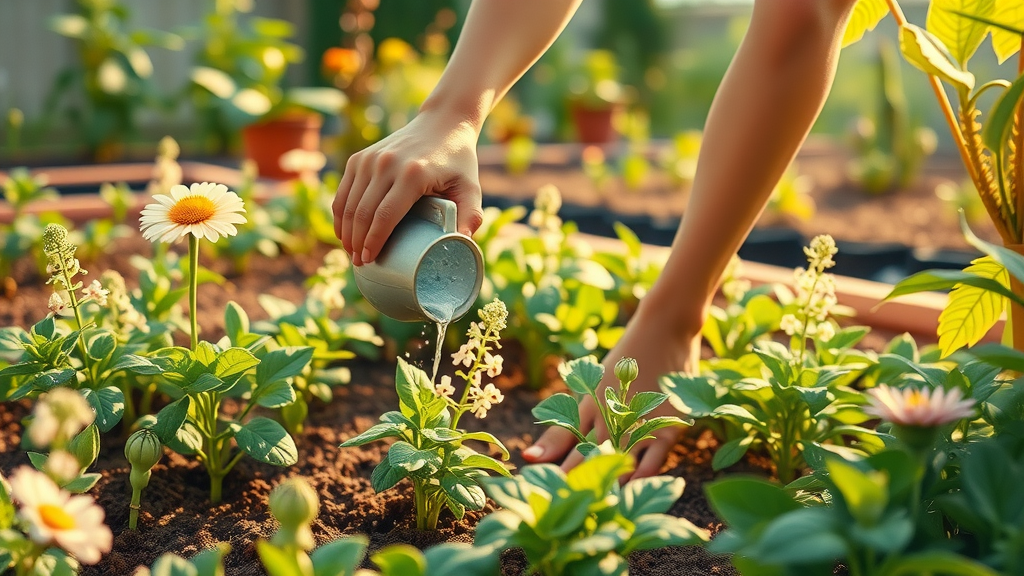
Common Mistakes to Avoid for Sustainable Growth
Avoid the folly of planting non-natives that become invasive or require constant watering. Resist the urge to over-fertilize, which can disrupt healthy soil processes and damage the ecosystem. Don’t neglect diversity—a single-species planting is less resilient to pests and weather extremes. Finally, don’t till or disturb your soil more than necessary, as this disrupts the living world of microbes and invertebrates so vital for growth. By sidestepping these pitfalls, you’re far more likely to enjoy the rewards of gardening in harmony with nature.
Modern Science Validates Traditional Growth Techniques in Nature
In recent decades, study after study—many accessible through resources like Google Scholar and PubMed Central —have confirmed the wisdom of growth techniques in nature that gardeners and land stewards have practiced for centuries. No matter how advanced our tools, it’s clear that working with your land, fostering healthy soil , and respecting biodiversity outpaces many “modern” approaches in sustaining abundance for people and the planet.
"By merging ancient practices with scientific discovery, we find the greatest promise for a future rich in both tradition and innovation."
—Permaculture researcher
Watch inspiring footage of thriving landscapes—forests, meadows, wetlands, and urban gardens—where people and nature are working in harmony. See how growth techniques in nature are applied in diverse climates and cultures to heal our living world and grow food for abundance.
People Also Ask
What is an example of growth in nature?
One classic example is forest succession : After a disturbance like a fire, a forest gradually regenerates, starting with pioneer plants, followed by shrubs and young trees, and eventually maturing into a biodiverse woodland. This cycle exemplifies nature’s ability to heal the living world and maintain ecosystems alive with abundance.
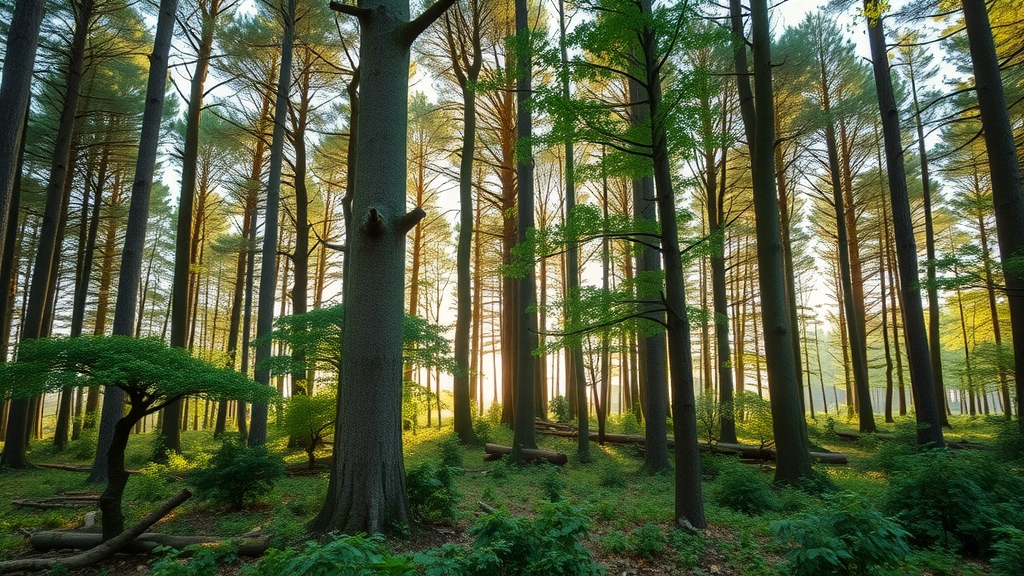
How can nature play a role in personal growth?
Nature offers endless lessons in resilience, adaptability, and renewal. Time spent in natural environments can foster creativity, lower stress, and inspire persistence, showing us how to face challenges and grow from adversity—just as the living world does after storms or drought.
What is growth in nature?
Growth in nature refers to the process by which living organisms—plants, animals, and entire ecosystems—develop, adapt, and proliferate over time. It encompasses not only physical expansion but also the intricate cycles of regeneration, succession, and diversity that allow the natural world to flourish.
How to make outdoor plants grow faster?
Ensure your garden has healthy soil rich in organic matter and teeming with beneficial organisms. Choose species adapted to your local climate (native plants), water appropriately, and provide enough sunlight. Apply mulch to conserve moisture and control weeds. Avoid over-fertilizing, which can do more harm than good; instead, let natural cycles set the pace for sustainable growth.
FAQs About Growth Techniques in Nature
-
What are the primary benefits of using growth techniques in nature?
These methods create abundant, resilient landscapes that support both people and wildlife, reduce input costs, and help heal our living world by fostering biodiversity and healthy soils. -
Are there challenges associated with natural growth techniques?
Yes—such as initial establishment time and the need to learn local ecosystem dynamics. However, overcoming these challenges leads to lower maintenance and systems truly alive with abundance. -
What’s the best way to begin growing with nature?
Start by improving your soil health, incorporating native plants, and observing your land’s unique patterns. Take inspiration from wild ecosystems and adapt over time. -
Is it a myth that natural techniques are less productive?
Yes! Managed wisely, natural techniques often exceed conventional yields over time by reducing losses to pests, drought, or soil degradation. -
How do growth techniques in nature support wildlife?
These methods provide food, shelter, water, and breeding sites, making diverse landscapes safe havens for pollinators, birds, and mammals.
Practical Steps: Start Growing With Nature Today
A Beginner’s Checklist for Adopting Growth Techniques in Nature
- Assess your soil: Test for texture, nutrients, and drainage.
- Choose regionally adapted native plants and perennial foods .
- Add organic matter to build healthy soil .
- Create a planting plan to support biodiversity with varied layers and bloom times.
- Mulch, water wisely, and minimize disturbance to soil.
- Observe your garden, learn from nature, and adapt as needed.
The Future: Evolving Growth Techniques in Nature
"Nature is the oldest, wisest gardener, and her strategies—honed over millennia—hold the promise for a future alive with abundance for people and all living things."
—Ecological restorationist
Discover how individuals and communities around the globe have transformed barren plots into lush sanctuaries by trusting nature’s wisdom—offering hope for anyone ready to start working with their land to heal our living world.
Take Action: Transform Your Practices With Growth Techniques in Nature Today
Ready to start? Embrace growth techniques in nature in your own garden, farm, or community space to cultivate abundance and help heal the living world. Begin with small steps—like adding native plants or composting kitchen scraps—and watch as nature’s wonders unfold before your eyes.
 Add Row
Add Row  Add
Add 




Write A Comment